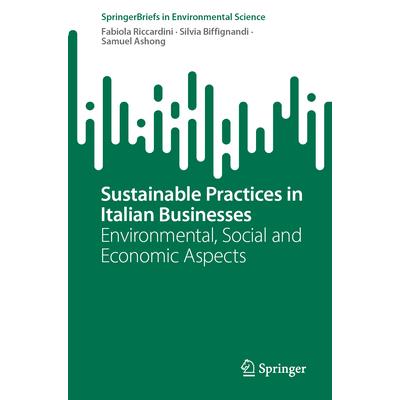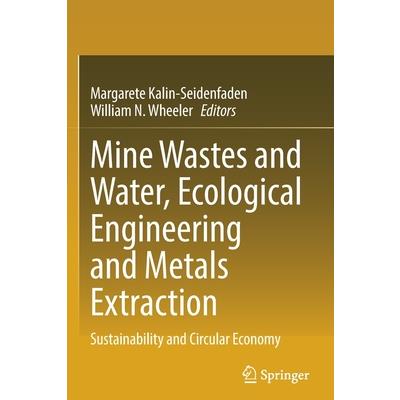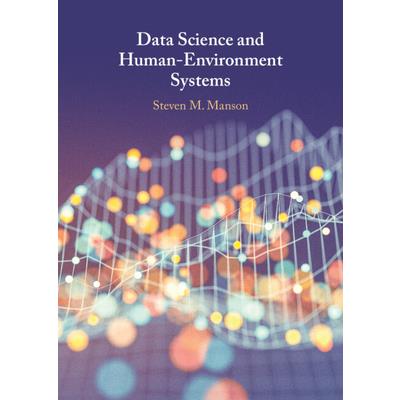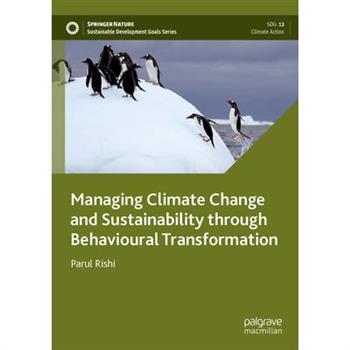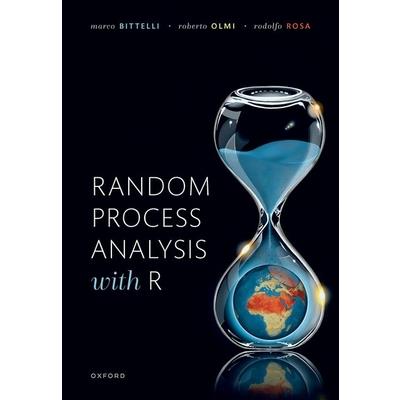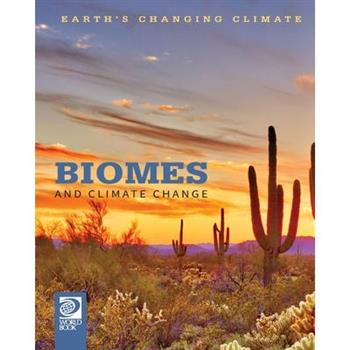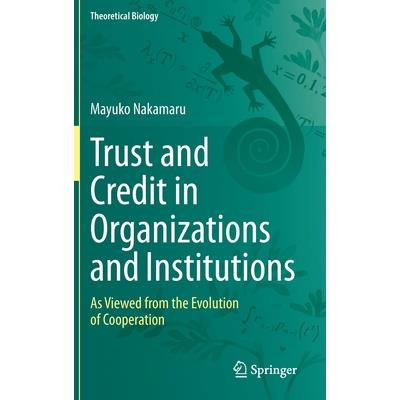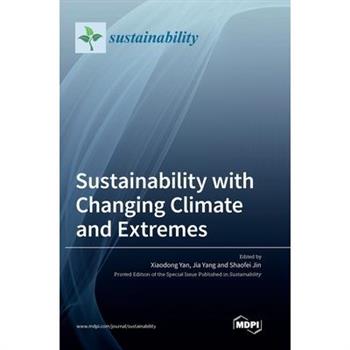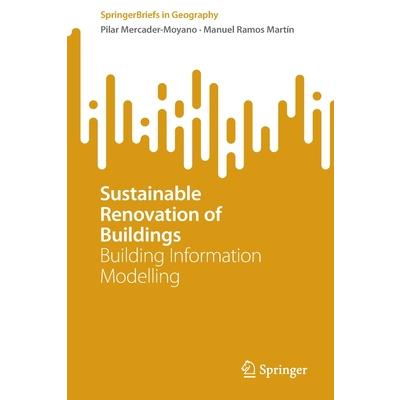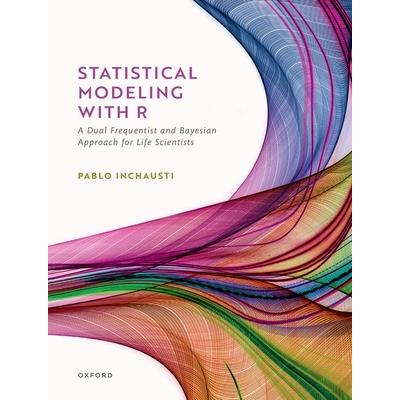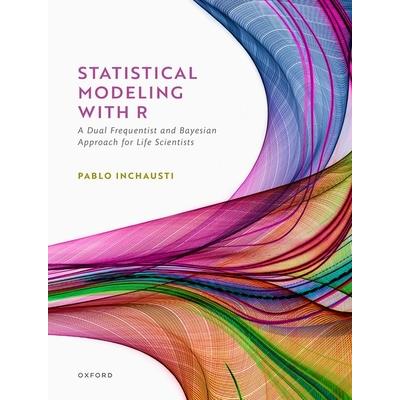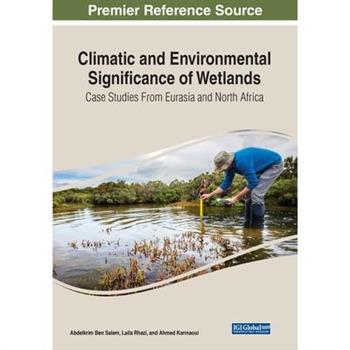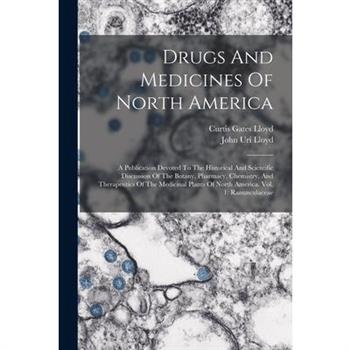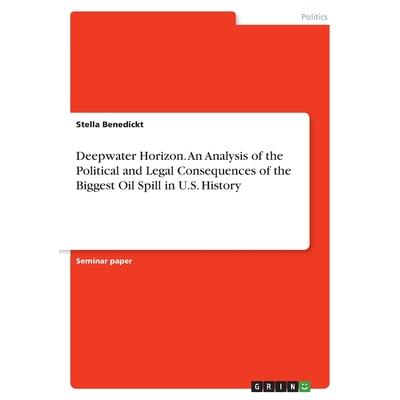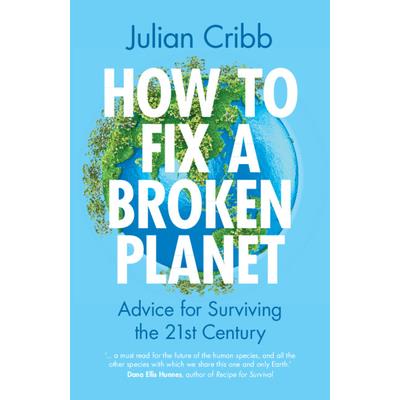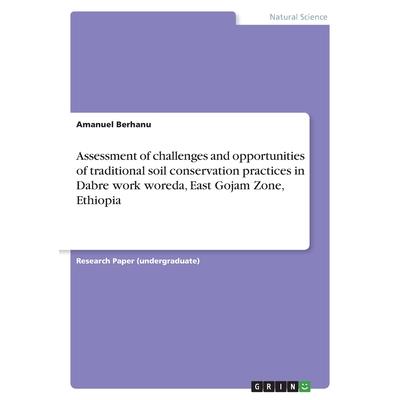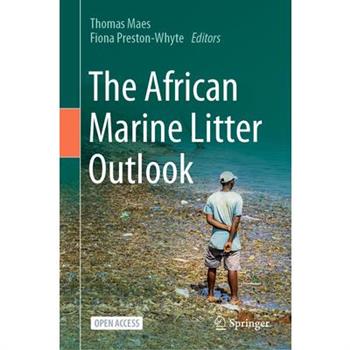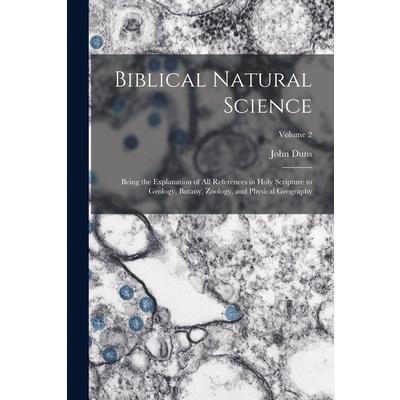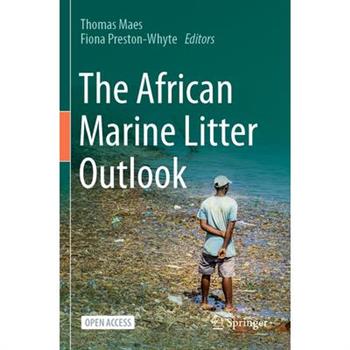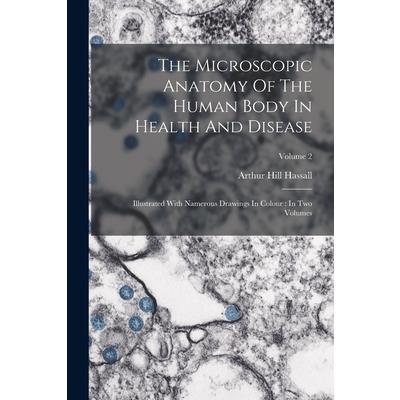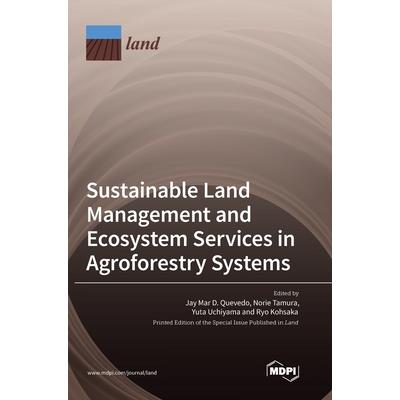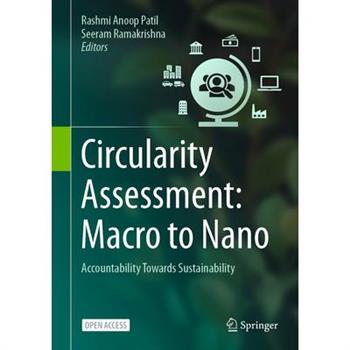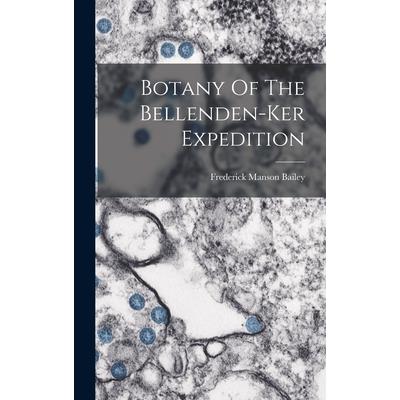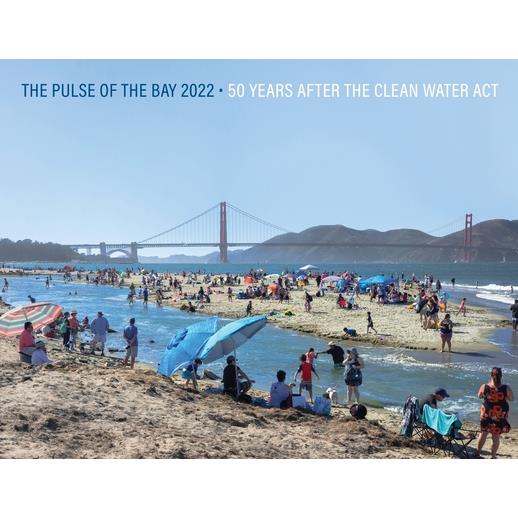Steering Political Currents
China's industrial policy has reignited the debate about state intervention in domestic economies. Few industries experience the guiding hand of the state as intensively as the Chinese electricity sector; a sector that has undergone radical change due to societal rumblings over the state's hegemony in resource allocation. The term 'smart grid' encom-passes the technical and systemic reforms required for structural change. This study examines the impact of political intervention on power struggles in China's electricity sector through the lens of steering theory. Document analysis and interviews shed light on how steering and counter-steering strategies are developed to influence policy design and its implementation in China's smart grid.
Sustainable Practices in Italian Businesses
This SpringerBrief describes the development and use of a synthetic indicator to assess different degrees of sustainability adoption by economic sector and businesses size. To make this analysis a theoretical framework which involves variables common to alternative frameworks (specifically ESG, GRI and Istat) is proposed. The empirical analysis focuses on the environmental, social and economic variables of the Italian businesses. In this analysis, all three pillars of sustainability - economic, environmental, and social - are considered. The work begins with a review of business sustainability literature and a look into institutional frameworks for the development and measurement of the phenomena. Connections between businesses and the SDGs are examined and comparison of the classifications of sustainable activities defined by GRI and ESG international standards is used to define a framework to be adopted to analyse ISTAT Business Census. Selected indicator variables are aggregated with a synthetic indicator and the results are presented (this is a new proposal of a synthetic indicator useful for the type of data used and published by ISTAT - Italian National Statistical Institute), discussing pros and cons of using it. This study provides two important innovative contributions. The first one is about how to approach the theoretical framework of businesses sustainability at firms aggregated level. The basic idea to work on a set of variables common to different approaches is interesting from the interpretative point of view. The second one, is about the specific empirical analysis, i.e. the Italian businesses sustainability situation. The investigation based on this new theoretical classification/framework and the new proposed indicator provides some interesting substantive results.
Mine Wastes and Water, Ecological Engineering and Metals Extraction
The book reviews past and present mine waste management processes. It estimates global water consumption by major mining resources per annum. This consumption will lead land use resources (agriculture and water) to collide with mining interests expected in the near future. With the application of novel metal extraction processes and the adoption of ecological engineering as an approach to waste and water management, a reduction in water and land consumption can be achieved. Using these methodologies would make mining more sustainable. Together with ore and metal recycling, mining methods can be brought into the 21st century. The book describes natural weathering processes and the microbiology of extreme environments, also known as mine sites. The role of microbes in weathering and remediation is emphasized, along with case studies of the enhancement of various ecological processes which curtail weathering and transform pollutants, creating ore bodies of the future.This book has been written as an extension to a contribution to the Oxford Research Encyclopedia. It adds depth and many examples from 40 years of multidisciplinary work with experts from geology, hydrogeology, geomicrobiology and algal physiology and chemistry, items too extensive for the Encyclopedia.
The Ocean and Us
The Ocean and Us provides an overview of our contemporary understanding of the ocean and all the ways our lives interact with it. It is intended for everyone with an interest in our blue planet. The book brings together the expertise of over 35 ocean specialists from around the world. It explores a wide variety of themes including the importance of a healthy ocean in the fight to halt and contain climate change. It covers issues such as overfishing and pollution, as well as emerging themes such as the blue economy, marine animal welfare and how we can leverage innovation to protect the ocean. The book provides an overview of some of the world's iconic threatened and at risk ocean ecosystems, and outlines current governance structures and ocean management tools. It also discusses the important social dimensions between people and the ocean, such as ocean and human wellbeing, communities and the ocean, and who gets to participate in the ocean space. The book aims to enhance ocean literacy by making specialist concepts accessible to non-experts, with a view to empowering concerned citizens everywhere to come into action for the ocean, and pave a better way forward for humanity.
Oribatid Mites
Oribatid mites, also called beetle or moss mites, include more than 10,000 named species representing 172 families worldwide. This book provides an identification key to the 96 families, 250 genera and the c.580 described species for Canada and Alaska, a fauna that encompasses more than 50% of Northern Hemisphere genera. It includes known data on the ecology of species, their distribution in the Holarctic region, and relevant literature. Oribatid mites are model arthropods in studies on development, morphology, ecology, physiology, and biomechanics. Growing recognition of the importance of soil systems for agriculture, reclamation, carbon storage and climate mitigation has spurred recent interest in the vast soil biodiversity that provide these ecosystem services. Yet the major barrier to exploring and understanding soil biodiversity is lack of comprehensive and functional taxonomic and ecological treatments of key biotic groups; groups such as the oribatid mites. Oribatid Mites is unparalleled in the comprehensive nature of the information provided. The authors, two leading global experts for this group, hope that readers will come to share their understanding of oribatid mites as part of the charismatic microfauna, the imagery in this book conveying their unique beauty.
Strategic Resilience and Sustainability Planning
The book examines management strategies for developing and implementing strategic resilience and sustainability plans for sustainable and climate-resilient communities and organizations. It examines trends in resilience and sustainability planning, highlighting best practices and case studies. The book explores Quadruple Bottom Line strategies and methods to implement resilience and sustainability-related initiatives in organizations and communities. It also examines diverse perspectives on climate resilience, climate preparedness and readiness, greenhouse gas emission reductions policies, climate adaptation and mitigation, disaster preparedness and readiness, and sustainable energy policies and projects. Additionally, the book offers insights on strategic resilience and sustainability planning during a pandemic as well as private sector perspectives on strategic resilience and sustainability. In chapter one, the author presents expanded definitions of strategic resilience and sustainability as well as mechanisms reshaping communities and organizations. Chapter two examines strategic planning processes for communities and organizations and lays out planning steps. Chapter three offers insights into community and organizational level engagement, looking at internal and external stakeholders, organizers, partners, collaborators, and implementers of distinct stages of strategic resilience and sustainability planning. Chapter four outlines measurements and tactics to track and improve strategic resilience and sustainability reporting mechanisms using the quadruple bottom line strategy. It offers a resilience progress report to ensure accountability, answerability, transparency, and good governance. Chapter five details the implementation of a strategic resilience and sustainability plan, describing programs and initiatives to achieve resilient and sustainable communities and organizations. Chapter six extensively examines the theoretical and practical intersection between climate change, resilience, and sustainability. Chapter seven reviews resources available for strategic resilience and sustainability plans to aid communities and organizations. Chapter eight assesses the current and future state of resilience and sustainability in communities and organizations, including concerns surrounding climate change, pandemics, disaster resilience, and emergency management and preparedness.
Concise Concepts of Organic Chemistry
There are only two ways to prepare for organic chemistry understanding principles and solving problems. Although these two aspects are completely different, instructors will typically gauge your understanding of the principles by testing your ability to solve problems; therefore you must master both aspects of organic chemistry. In this study guide we have provided concise lecture notes and added additional questions that one might see on an exam or on a standardized test like the MCAT. In this book, we explore step-by-step processes for analyzing problems so that the principle can be understood with ease.
Data Science and Human-Environment Systems
Transformation of the Earth's social and ecological systems is occurring at a rate and magnitude unparalleled in human experience. Data science is a revolutionary new way to understand human-environment relationships at the heart of pressing challenges like climate change and sustainable development. However, data science faces serious shortcomings when it comes to human-environment research. There are challenges with social and environmental data, the methods that manipulate and analyze the information, and the theory underlying the data science itself; as well as significant legal, ethical and policy concerns. This timely book offers a comprehensive, balanced, and accessible account of the promise and problems of this work in terms of data, methods, theory, and policy. It demonstrates the need for data scientists to work with human-environment scholars to tackle pressing real-world problems, making it ideal for researchers and graduate students in Earth and environmental science, data science and the environmental social sciences.
Toys and Sustainability
This book presents five interesting chapters dealing with the sustainability of toys. The concept of sustainability has reached all industrial sectors these days and being practiced in almost all the sectors. One of the main sectors where sustainability has to be embedded to the core is the toy sector. Needless to enumerate the importance of sustainability in this sector especially when it comes to usage of chemicals and so on. There are various elements associated with the sustainability of toys and there is a dearth of published literature on this subject.
The Path to a Sustainable Civilisation
The Path to a Sustainable Civilisation shows that we have unwittingly fallen into an existential crisis of our own making. We have allowed large corporations, the military and other vested interests to capture governments and influence public opinion excessively. We have created a god called 'the market' and allowed our most important decisions to be made by this imaginary entity, which is in fact a human system controlled by vested interests. The result has been the exploitation of our life support system, our planet, and most of its inhabitants, to the point of collapse. This book argues that the way out of our black hole is to build social movements to apply overwhelming pressure on government and big business, weaken the power of vested interests and strengthen democratic decision-making. This must be done simultaneously with action on the specific issues of climate, energy, natural resources and social justice, in order to transition to a truly sustainable civilisation.
The Sustainable University of the Future
The Sustainable University of the Future discusses the rapid changes taking place within institutions of higher education--changes that have pushed universities to reconsider their traditional policies and plans. The book, which has its origins in the Qatar University Annual Research Forum and Exhibition (QUARFE) event "University of the Future" examines the many ways universities are trying to keep pace with this transformation, despite regional and international challenges. The book looks at the role of universities in meeting the United Nation's Sustainable Development Goals (SDGs), the impact of Industry 4.0, the social aspects of University 4.0, and the future of research-based universities. The need to adopt modern programs and tools is stressed, and ways to anticipate and plan for future challenges are explored.
Managing Climate Change and Sustainability Through Behavioural Transformation
This book addresses climate change and sustainability management from a transdisciplinary perspective which encompasses within itself how different humanistic disciplines can culminate with each other to move ahead with the agenda. Issues of adapting to climate change and sustainability management have been gaining global prominence over the past few decades. There have also been volumes of literature that highlight the technical dimensions of climate change and sustainability across regions and cultures. However, they have had limited strength to bring direct and desirable impact in promoting pro-climate action and sustainability behaviour. The major reason for this is limited inclusion of pluralistic perspectives into human cognition and affect, and resultant limited public acceptability. Although behavioural science as a discipline has taken a front seat in promoting behavioural transformation, the book argues that other humanistic fields of understanding like education, art, literature, philosophy, political science, sociology, economics, etc., have to be integrated in order to present a holistic standpoint to sustainability literature.
Random Process Analysis with R
Random process analysis (RPA) is used as a mathematical model in physics, chemistry, biology, computer science, information theory, economics, environmental science, and many other disciplines. Over time, it has become more and more important for the provision of computer code and data sets. This book presents the key concepts, theory, and computer code written in R, helping readers with limited initial knowledge of random processes to become confident in their understanding and application of these principles in their own research. Consistent with modern trends in university education, the authors make readers active learners with hands-on computer experiments in R code directing them through RPA methods and helping them understand the underlying logic. Each subject is illustrated with real data collected in experiments performed by the authors or taken from key literature. As a result, the reader can promptly apply the analysis to their own data, making this book an invaluable resource for undergraduate and graduate students, as well as professionals, in physics, engineering, biophysical and environmental sciences, economics, and social sciences.
Biomes and Climate Change
Does it matter if a tiny plant or animal goes extinct? Will deserts get bigger as Earth gets hotter? Why is climate change bad news for beavers and alligators and fish? The exciting, eye-catching photographs and easy-to-understand sentences in Habitats and Climate Change help young readers learn about the possible devastating effects of climate change on the habitats of plants and animals and people. The book also has a helpful glossary and an index that direct students to the most important terms and topics.
Trust and Credit in Organizations and Institutions
This book shows that evolutionary game theory can unravel how mutual cooperation, trust, and credit in a group emerge in organizations and institutions. Some organizations and institutions, such as insurance unions, credit unions, and banks, originated from very simple mutual-aid groups. Members in these early-stage mutual-aid groups help each other, making rules to promote cooperation, and suppressing free riders. Then, they come to "trust" not only each other but also the group they belong to, itself. The division of labor occurs when the society comes to have diversity and complexity in a larger group, and the division of labor also requires mutual cooperation and trust among different social roles. In a larger group, people cannot directly interact with each other, and the reputation of unknown people helps other decide who is a trustworthy person. However, if gossip spreads untruths about a reputation, trust and cooperation are destroyed.Therefore, how to suppress untrue gossip is also important for trust and cooperation in a larger group. If trustworthiness and credibility can be established, these groups are successfully sustainable. Some develop and evolve and then mature into larger organizations and institutions. Finally, these organizations and institutions become what they are now. Therefore, not only cooperation but also trust and credit are keys to understanding these organizations and institutions.The evolution of cooperation, a topic of research in evolutionary ecology and evolutionary game theory, can be applied to understanding how to make institutions and organizations sustainable, trustworthy, and credible. It provides us with the idea that evolutionary game theory is a good mathematical tool to analyze trust and credit. This kind of research can be applied to current hot topics such as microfinance and the sustainable use of ecosystems.
Sustainability with Changing Climate and Extremes
This book focuses on the up-to-date studies on the sustainability with changing climate and extremes. The main contributors discussed the changing climate and extreme events, as well as their impacts on natural and human dimension sustainability, including the incorporated social-ecologic and socioeconomic processes. Special attention is given to four main sections: natural disasters in agriculture; urban/rural ecosystem, tourism, and ecosystem service; extreme climate indices, and newly created dataset for climate change.
Sustainable Renovation of Buildings
The book provides a complete vision about Spanish sustainable renovation of buildings situation at this moment, analysing legal and technological context and opportunities that economic stimulus --by means of direct aids-- and the use of BIM methodologies offers a standardization of high scale interventions.Nowadays, BIM models let us integrate multiple quantitative parameters that can agile the information to interchange between stakeholders. Using this potential to standardize protocols of interventions and share knowledge is necessary to face a high scale intervention that our cities need.Climatic Emergency and socioeconomic crisis caused by recent events --COVID-19 and hydrocarbons crisis-- are the two principal struggles we face as society. European Politics, embodied by National Energy and Climate Plans (NECPs) developed by each region give the way to the green transition of different productive sectors.Our building stock is responsible for approximately 36% of the CO2 emissions in the European Union. For this reason, these policies focus a large part of their efforts on economically incentivizing a new development model for the building sector that is committed to the large-scale renovation of the existing real estate stock and that, through the reduction of energy demand and of emissions, manage to reduce the environmental impact of these. Next Generation EU is the new recovery instrument that aims to mobilize investments towards strategic sectors for the reorientation of the production model that, among other measures, contributes to decarbonization through the promotion of energy efficiency and the deployment of renewable energies.
Statistical Modeling with R
To date, statistics has tended to be neatly divided into two theoretical approaches or frameworks: frequentist (or classical) and Bayesian. Scientists typically choose the statistical framework to analyse their data depending on the nature and complexity of the problem, and based on their personal views and prior training on probability and uncertainty. Although textbooks and courses should reflect and anticipate this dual reality, they rarely do so. This accessible textbook explains, discusses, and applies both the frequentist and Bayesian theoretical frameworks to fit the different types of statistical models that allow an analysis of the types of data most commonly gathered by life scientists. It presents the material in an informal, approachable, and progressive manner suitable for readers with only a basic knowledge of calculus and statistics. Statistical Modeling with R is aimed at senior undergraduate and graduate students, professional researchers, and practitioners throughout the life sciences, seeking to strengthen their understanding of quantitative methods and to apply them successfully to real world scenarios, whether in the fields of ecology, evolution, environmental studies, or computational biology.
Statistical Modeling with R
To date, statistics has tended to be neatly divided into two theoretical approaches or frameworks: frequentist (or classical) and Bayesian. Scientists typically choose the statistical framework to analyse their data depending on the nature and complexity of the problem, and based on their personal views and prior training on probability and uncertainty. Although textbooks and courses should reflect and anticipate this dual reality, they rarely do so. This accessible textbook explains, discusses, and applies both the frequentist and Bayesian theoretical frameworks to fit the different types of statistical models that allow an analysis of the types of data most commonly gathered by life scientists. It presents the material in an informal, approachable, and progressive manner suitable for readers with only a basic knowledge of calculus and statistics. Statistical Modeling with R is aimed at senior undergraduate and graduate students, professional researchers, and practitioners throughout the life sciences, seeking to strengthen their understanding of quantitative methods and to apply them successfully to real world scenarios, whether in the fields of ecology, evolution, environmental studies, or computational biology.
Climatic and Environmental Significance of Wetlands
Wetlands provide a key service in an ecosystem such as providing resilience against drought and diverse habitats that support biodiversity. Because of their ephemeral character and their small size, however, these vulnerable ecosystems are declining rapidly as climate change continues to surge and human activities expand. Rational management of wet ecosystems need accompanying actions covering research, systematic observation, and more. Climatic and Environmental Significance of Wetlands: Case Studies from Eurasia and North Africa produces innovative concepts, methodologies, tools, and applications for ecosystem service valuation, wetland biodiversity conservation, fresh water supply, agricultural production, food security, wetland management, and its impact on biodiversity. It assesses the cumulative risk posed to wetland habitats and species by human activities and explores the consequences for the delivery of ecosystem services and biodiversity at local, regional, and global scales, as well as the impacts of climate change on wetland ecosystems and water resources. Covering topics such as geochemistry, invasive species, and sedimentary change, this premier reference source is an indispensable resource for government officials, engineers, environmental managers, environmentalists, students and educators of higher education, researchers, and academicians.
Drugs And Medicines Of North America
This work has been selected by scholars as being culturally important, and is part of the knowledge base of civilization as we know it.This work is in the "public domain in the United States of America, and possibly other nations. Within the United States, you may freely copy and distribute this work, as no entity (individual or corporate) has a copyright on the body of the work.Scholars believe, and we concur, that this work is important enough to be preserved, reproduced, and made generally available to the public. We appreciate your support of the preservation process, and thank you for being an important part of keeping this knowledge alive and relevant.
Deepwater Horizon. An Analysis of the Political and Legal Consequences of the Biggest Oil Spill in U.S. History
Seminar paper from the year 2020 in the subject Politics - Environmental Policy, grade: 1,0, Christian-Albrechts-University of Kiel, language: English, abstract: This paper shortly explains the incident and it's environmental and economical consequences. However, the focus is on the political and legal changes that can be seen as a result of the accident. Who was held responsible for the spill? What was the direct response from the Obama Administration and how did the biggest oil spill in history changed policy concerning safety and oil production? For centuries the oceans are a source for food supply, transportation, security, oil and gas resources. At the same time, human pressure the oceans both from land and see and climate change causes further tension. Ocean governance developed as a response to this. It's the conduct of the policy, actions and affairs regarding the oceans and is engaged for example with the division of the ocean space and the diverging regulations to control human activity in the oceans. By the middle of the twentieth century there was an impetus to extend national claims over offshore resources. The exploitation fever grow as technology opens new ways to tap the resources of the sea. Especially oil exploration was moving further from land and deeper into the bedrock of continental margins in the late 1960s. The fast development of the offshore oil production needs to be seen in a political context as till the 1970s the United States had been the world's number one producer of petroleum and American oil companies determined the global price of oil. However, the American demand for oil steadily increased and so did the overall reliance on imports. The "oil shocks" in 1973 and 1979 were the clearest and most painful affirmation of the nation's vulnerability because of its dependence on import oil. The more oil the U.S. produces itself the more the country can limit its involvement with foreign powers and concentrate on entirely meeting its own
Elements of Physiophilosophy
This work has been selected by scholars as being culturally important, and is part of the knowledge base of civilization as we know it.This work is in the "public domain in the United States of America, and possibly other nations. Within the United States, you may freely copy and distribute this work, as no entity (individual or corporate) has a copyright on the body of the work.Scholars believe, and we concur, that this work is important enough to be preserved, reproduced, and made generally available to the public. We appreciate your support of the preservation process, and thank you for being an important part of keeping this knowledge alive and relevant.
How to Fix a Broken Planet
Do you want to help save human civilisation? If so, this book is for you. How to Fix a Broken Planet describes the ten catastrophic risks that menace human civilisation and our planet, and what we can all do to overcome or mitigate them. It explains what must be done globally to avert each megathreat, and what each of us can do in our own lives to help preserve a habitable world. It offers the first truly integrated world plan-of-action for a more sustainable human society - and fresh hope. A must-read for anyone seeking sound practical advice on what citizens, governments, companies, and community groups can do to safeguard our future.
The Recession of the Last Ice Sheet in New England
This work has been selected by scholars as being culturally important, and is part of the knowledge base of civilization as we know it.This work is in the "public domain in the United States of America, and possibly other nations. Within the United States, you may freely copy and distribute this work, as no entity (individual or corporate) has a copyright on the body of the work.Scholars believe, and we concur, that this work is important enough to be preserved, reproduced, and made generally available to the public. We appreciate your support of the preservation process, and thank you for being an important part of keeping this knowledge alive and relevant.
Assessment of challenges and opportunities of traditional soil conservation practices in Dabre work woreda, East Gojam Zone, Ethiopia
Research Paper (undergraduate) in the subject Biology - Miscellaneous, language: English, abstract: The study was conducted in Diyateba kebele and Dijumeti kebeles at Debirework Woreda, East Gojjam zone. The major purpose of the study was to assess the opportunity and challenges of traditional soil conservation practices in Diyateba kebele and Dijumeti kebeles kebele. It also among at investigate the opportunities and challenges of traditional soil conservation practices. The data for this study were collected from both primary and secondary sources by using simple random sampling techniques. The primary data was collected through questionnaires and interviewing farmers who have long history and more experience about the data. The secondary data sources were taken from books and Diyateba kebele and Dijumeti kebele Administrative office. The study should that the farmers of the study area have a good awareness of the negative effects of soil erosion on socio-economic and environmental aspects of the society. To overcome the negative effects, farmers of the study area have practice several traditional soil conservation measures. These practices are both biological (application of manure, crop rotation) and structural measures (soil or stone bund) to protect soil from and maintain soil fertility. To apply those traditional soil conservation practices there are opportunities like distance from homestead, presence of livestock, area of cultivated land and absence of inorganic fertilizer. And has challenges like socio-economic, farm institutional and technological challenges. To reduce these problems, there should be improved knowledge of local communities 'towards traditional soil conservation practices.
Biblical Natural Science
This work has been selected by scholars as being culturally important, and is part of the knowledge base of civilization as we know it.This work is in the "public domain in the United States of America, and possibly other nations. Within the United States, you may freely copy and distribute this work, as no entity (individual or corporate) has a copyright on the body of the work.Scholars believe, and we concur, that this work is important enough to be preserved, reproduced, and made generally available to the public. We appreciate your support of the preservation process, and thank you for being an important part of keeping this knowledge alive and relevant.
The African Marine Litter Outlook
This open access book provides a cross-sectoral, multi-scale assessment of marine litter in Africa with a focus on plastics. From distribution, to impacts on environmental and human health, this book looks at what is known scientifically. It includes a policy analysis of the instruments that currently exist, and what is needed to help Africa tackle marine litter-including local and transboundary sources. Across 5 chapters, experts from Africa and beyond have put together a summary of the scientific knowledge currently known about marine litter in Africa. The context of the African continent and future projections form a backdrop on which the scientific knowledge is built. This scientific knowledge incorporates quantities, distributions, and pathways of litter into the marine environment, highlighting where the impacts of marine litter are most felt in Africa. These impacts have widespread effects, with ecological, social, economic, and human health repercussions. While containing detailed scientific information, this book provides a sound knowledge base for policymakers, NGOs and the broader public.
Martha Alexander Gerbode
This work has been selected by scholars as being culturally important, and is part of the knowledge base of civilization as we know it.This work is in the "public domain in the United States of America, and possibly other nations. Within the United States, you may freely copy and distribute this work, as no entity (individual or corporate) has a copyright on the body of the work.Scholars believe, and we concur, that this work is important enough to be preserved, reproduced, and made generally available to the public. We appreciate your support of the preservation process, and thank you for being an important part of keeping this knowledge alive and relevant.
The Microscopic Anatomy Of The Human Body In Health And Disease
This work has been selected by scholars as being culturally important, and is part of the knowledge base of civilization as we know it.This work is in the "public domain in the United States of America, and possibly other nations. Within the United States, you may freely copy and distribute this work, as no entity (individual or corporate) has a copyright on the body of the work.Scholars believe, and we concur, that this work is important enough to be preserved, reproduced, and made generally available to the public. We appreciate your support of the preservation process, and thank you for being an important part of keeping this knowledge alive and relevant.
Sustainable Land Management and Ecosystem Services in Agroforestry Systems
This book focuses on case studies and theoretical concepts on sustainable land-use management in agroforestry systems. Special attention is given to farmland management in the contexts of farmers' investments, farmers' economic and behavioral factors, and farmers' perceptions of irrigation systems. Urban agriculture and its extensions (e.g., urban gardening and urban beekeeping) are also featured in this book, in addition to the ways in which these practices can contribute to biodiversity conservation goals. Additionally, a case study on the use of the ecosystem evaluation index is featured and provides scientific and practical bases for land protection. Lastly, a state-of-the-art review on land-use policy is included, providing insights into how agroforestry systems can be converted to other land uses to meet the current demands. Scientists, practitioners, and policymakers can make use of this book in designing sustainable agroforestry systems.
Gated Communities and the Digital Polis
This edited collection provides an alternative discourse on cities evolving with physically and virtually networked communities--the 'digital polis'--and offers a variety of perspectives from the humanities, media studies, geography, architecture, and urban studies. As an emergent concept that encompasses research and practice, the digital polis is oriented toward a counter-mapping of the digital cityscape beyond policing and gatekeeping in physical and virtual gated communities. Considering the digital polis as offering potential for active support of socially just and politically inclusive urban circumstances in ways that mirror the Greek polis, our attention is drawn towards the interweaving of the development of digital technology, urban space, and social dynamics. The four parts of this book address the formation of technosocial subjectivity, real-and-virtual combined urbanity, the spatial dimensions of digital exclusion and inclusion, and the prospect of emancipatoryand empowering digital citizens. Individual chapters cover varied topics on digital feminism, data activism, networked individualism, digital commons, real-virtual communalism, the post-family imagination, digital fortress cities, rights to the smart city, online foodscapes, and open-source urbanism across the globe. Contributors explore the following questions: what developments can be found over recent decades in both physical and virtual communities such as cyberspace, and what will our urban future be like? What is the 'digital polis' and what kinds of new subjectivity does it produce? How does digital technology, as well as its virtuality, reshape the city and our spatial awareness of it? What kinds of exclusion and cooperation are at work in communities and spaces in the digital age? Each chapter responds to these questions in its own way, navigating readers through routes toward the digital polis. Chapter "Introduction - The digital polisand its practices: Beyond gated communities" is available open access under a Creative Commons Attribution 4.0 International License via link.springer.com.
Circularity Assessment: Macro to Nano
This open access book attempts to provide a perspective on the circularity assessment at different levels of the systemic hierarchy and advocates better resource management for a sustainable future. It demonstrates how relevant circularity indicators are used for quantifying the extent of circularity of each level. Illustrative case studies that discuss the process of quantitatively interpreting progress towards circularity are provided. This work caters to a broad readership inclusive of governance, basic research, engineering, and business stakeholders. The conclusion signifies the role of consumer community in achieving circularity.
Circularity Assessment: Macro to Nano
This open access book attempts to provide a perspective on the circularity assessment at different levels of the systemic hierarchy and advocates better resource management for a sustainable future. It demonstrates how relevant circularity indicators are used for quantifying the extent of circularity of each level. Illustrative case studies that discuss the process of quantitatively interpreting progress towards circularity are provided. This work caters to a broad readership inclusive of governance, basic research, engineering, and business stakeholders. The conclusion signifies the role of consumer community in achieving circularity.
The Microscopic Anatomy Of The Human Body In Health And Disease
The Pulse of the Bay 2022
This year marks the 50th anniversary of a transformationalturning point for Bay water quality: passage of the FederalWater Pollution Control Act Amendments of 1972, commonlyknown as the Clean Water Act (CWA). On the occasion of this momentous milestone, this edition of The Pulse of the Bay includes nineperspectives written by representatives of the groupsthat have a prominent role in managing Bay water quality, and profiles of the parameters that have been the main water qualityconcerns over the past 50 years, with a focus on long-termtrends and a historical perspective.The CWA provided a legal framework and a considerable amount of federalfunding (over $1 billion, equivalent to approximately $7billion in 2022 dollars) that drove a rapid and remarkableimprovement in Bay water quality. By 1987, all municipalwastewater treatment plants but one were providingsecondary treatment, which effectively removes oxygen demandingorganic matter and bacteria as well as manytoxic metals and organic chemicals. Bay monitoring dataavailable for the 1970s and 1980s show that dissolved oxygenlevels increased, and bacteria and toxic metal concentrationssharply declined. By 1982, public harvesting of shellfish inSan Mateo County was approved for the first time in 50years. By 1987, the Water Board concluded that swimmingwas safe in most areas of the Bay during summer.
Inorganic-Organic Composites for Water and Wastewater Treatment
This second volume on ''Inorganic-Organic Composites for Water and Wastewater Treatment'' reviews research findings on advanced materials and methods for purification. Considering the fact that new emerging pollutants are released into the environment and water bodies, it is necessary to develop more advanced techniques in order to treat them. The utilization of metal - organic framework in view of applications, synthesis, properties like adsorption, characterization of the electronic and geometric aspects, and hybrid systems is reiewed in this book, and the advantages/disadvantages, shortcomings including future prospects associated with metal-based nanoparticles and nanocomposites for water decontamination are discussed. In addition, the use of carbon quantum dots, supramolecular ion-exchange resins, multifunctional composite aerogels, algal biomass valorization and titania-containing composites in treatment processes are also presented.
Waste Management, Processing and Valorisation
1. The menace of plastic water bottles: Challenges and management in the African context.- 2. Waste and health: Dewatered sludge and its potential hazard to human.- 3. Life cycle analysis for solid waste management in developing countries.- 4. Characterisation of waste fractions found in landfills.- 5. Microbial factory; utilization of biological waste for the production of beneficial by-products.- 6. Solid waste utilization - A case study of the brewing process.- 7. Valorization of tropical seaweed wastes for biogas production: A review.- 8. The future promising alternative waste to renewable energy from microbial fuel cell.- 9. Waste to wealth: The importance of yeasts in a sustainable bioethanol production.- 10. Zero waste management in seafood industry: enzymatic hydrolysis perspective
History of the Gems Found in North Carolina
This work has been selected by scholars as being culturally important, and is part of the knowledge base of civilization as we know it.This work is in the "public domain in the United States of America, and possibly other nations. Within the United States, you may freely copy and distribute this work, as no entity (individual or corporate) has a copyright on the body of the work.Scholars believe, and we concur, that this work is important enough to be preserved, reproduced, and made generally available to the public. We appreciate your support of the preservation process, and thank you for being an important part of keeping this knowledge alive and relevant.
Advanced Environmental Monitoring with Remote Sensing Time Series Data and R
This book provides a step-by-step guide on how to use various publicly available remotely sensed time series data sources for environmental monitoring and assessment. Readers will learn how to extract valuable information on global changes from a 20-year collection of ready-to-use remotely sensed data through the free open statistical software R and its geographic data analysis and modeling tools. The case studies are from the Mediterranean region-a designated hot spot regarding climate change effects. Each chapter is dedicated to specific remote sensing products chosen for their spatial resolution. The methods used are adapted from large-scale to smaller-scale problems for different land cover areas.FeaturesIncludes real-world applications of environmental remotely sensed dataAnalyzes the advantages and restrictions of each data sourceFocuses on a wide spectrum of applications, such as hydrology, vegetation changes, land surface temperature, fire detection, and impactsIncludes R computer codes with explanatory comments and all applications use only freely available remotely sensed dataPresents a step-by-step processing through open source GIS and statistical analysis softwareAdvanced Environmental Monitoring with Remote Sensing Time Series Data and R describes and provides details on recent advances concerning publicly available remotely sensed time series data in environmental monitoring and assessment. This book is a must-have practical guide for environmental researchers, professionals, and students.
History of the Gems Found in North Carolina
This work has been selected by scholars as being culturally important, and is part of the knowledge base of civilization as we know it.This work is in the "public domain in the United States of America, and possibly other nations. Within the United States, you may freely copy and distribute this work, as no entity (individual or corporate) has a copyright on the body of the work.Scholars believe, and we concur, that this work is important enough to be preserved, reproduced, and made generally available to the public. We appreciate your support of the preservation process, and thank you for being an important part of keeping this knowledge alive and relevant.






